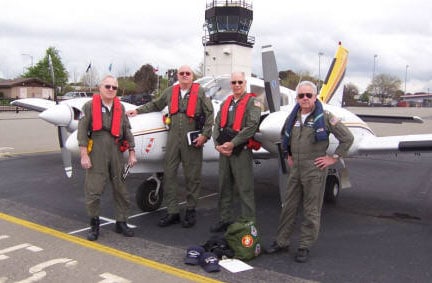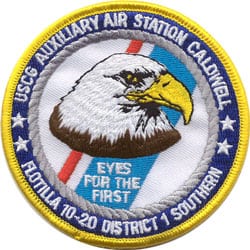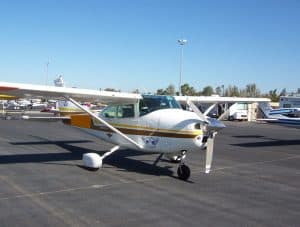 Mr. Malcom Stuart Boylan planted the seed that eventually grew into the Coast Guard Auxiliary. As a result of discussions with the officers of the USCGC Hermes, Boylon sent a letter dated August 23, 1934, outlining a basic concept for a Coast Guard Reserve composed of flotillas of small craft to be placed at the disposal of the Coast Guard for utilization during emergencies incident to its duties and responsibilities. The letter made its way to the desk of CDR Russell Waesche,
Mr. Malcom Stuart Boylan planted the seed that eventually grew into the Coast Guard Auxiliary. As a result of discussions with the officers of the USCGC Hermes, Boylon sent a letter dated August 23, 1934, outlining a basic concept for a Coast Guard Reserve composed of flotillas of small craft to be placed at the disposal of the Coast Guard for utilization during emergencies incident to its duties and responsibilities. The letter made its way to the desk of CDR Russell Waesche,  an aide to the Commandant, who saw the merit in the idea.
an aide to the Commandant, who saw the merit in the idea.
When Waesche became Commandant of the Coast Guard in 1936 the creation of a reserve became one of his projects. With the backing of the Secretary of the Treasury, the Secretary of the Navy and several influential Congressmen, Waesche was able to gain Congressional approval.
The Coast Guard Reserve Act of 1939 passed on June 23 of that year, created an organization that was unique in the federal government. The new Reserve was composed of citizens of the United States and its Territories and Possessions who were owners, sole or in part, of motorboats or yachts. The Reserve had four broadly defined interests: (a) The safety of life at sea and upon the navigable waters; (b) The promotion of efficiency in the operation of motorboats and yachts; (c) A wider knowledge of and better compliance with, the laws, rules, and regulations governing the operation and navigation of motorboats and yachts; and (d) facilitating certain operations of the Coast Guard.
The Coast Guard Reserve was a civilian volunteer organization and the members were not considered to be government employees. Members did not hold ranks, wear uniforms, or receive military training. Reservists were invited to place their boats at the disposal of the Coast Guard with the understanding that each such boat would be commanded by a regular Coast Guard officer or petty officer. The Coast Guard reimbursed the owners for operating cost incurred during an assigned mission.
The basic unit of the Reserve was a flotilla, consisting of 10 or more boats and presided over by an elected civilian with the title of Flotilla Commander, Five or more Flotilla composed a Division with an elected Division Captain. The Reserve Divisions within each Coast Guard District were administered by civilian officials called the District Commodores. The Coast Guard administered the Reserve through a regular officer with the title Chief Director of the Reserve. He was located at Headquarters and was assisted by a Director in each Coast Guard District.
In this original form the Coast Guard Reserve lasted less than two years. In early 1941 the Coast Guard was preparing for war. On February 19 Congress passed a law restructuring the Coast Guard Reserve to function as a military source of wartime manpower like the reserves of the other armed services. Two Reserve categories were created. “Regular Reservists” met full military requirements, were paid for their service, and when assigned active duty, were assigned anywhere the Coast Guard deemed appropriate. Men who for any reason could not meet these requirements were invited to become “Temporary Reserve” (TR) members. A Coast Guard TR was a less than full time volunteer who served only in some designated geographic area, usually near his home. Age limits for TRs were 17 to 64 and physical requirements were not stringent. Members of the initial organization were invited to enroll in the reserves as TRs. These reservists, along with newly enrolled civilians, performed coastal defense and search and rescue duties. They engaged in anti-submarine patrols and port security. As the ranks grew, thousands of Coast Guard personnel were freed up for service overseas.
The war changed the character of the initial Reserve. It was conceived as a boater’s organization but during the war the Coast Guard had used it as a means to recruit and man the Temporary Reserve. Many of these TRs did not own boats and filled billets not directly related to boating. When the Coast Guard obtained funding after the war for a small military Reserve the need for a civilian peacetime auxiliary was affirmed. This organization became the Coast Guard Auxiliary. The functions of the Auxiliary were identified as: (a) To provide orderly and efficient means for bringing to the attention of the Coast Guard, recommendations for improvement in matters of maritime safety for which the Coast Guard is responsible. (b) To provide continuous liaison between the Coast Guard and small craft interests. (C) To provide means for the prompt and efficient mobilization of volunteer resources in case of local casualties. (d) To provide nucleus for assistance in mobilization of personnel and small craft resources in case of National Emergency. (e) To encourage universal safe and courteous operation of vessels by precept and example of members of the Auxiliary and to assist in dissemination of safe marine practices.
Aircraft had joined the Auxiliary informally during World War II. Public Law 451 passed by congress in September 1945, added owners of aircraft and radio stations to those eligible for membership in the Auxiliary. Public education, vessel examinations and search and rescue became the basic missions. The postwar period brought cutbacks in funding and reductions in the number of personnel, aircraft and vessels available for search and rescue while at the same time the need was increasing. The Auxiliary supplemented active duty forces and proved to be a welcome addition. The Coast Guard, over the years to come, would rely on the Auxiliary to fill the gaps. Aircraft utilization increased and as a result there were several Auxiliary Districts that had aviation flotillas. Pilots from the 11th district operated out of Vail Field in Los Angeles and the 14th District formed two air divisions in Hawaii where the Coast Guard total aviation assets were very limited.
In 1952 the Commandant of the Coast Guard, ADM Merlin O’Neill, authorized the creation of Auxiliary Operational Units (AUXOPS). Specially trained groups consisting of five boats, two aircraft, two radio stations, and 50 Auxiliarists were organized to assist the Coast Guard in emergencies. This evolved into a specialized, rigorous training program for individual Auxiliarists. A member, who passed seven courses, Administration, Communications, Patrols, Piloting, Seamanship, Weather, and Search and Rescue, were eligible for AUXOP status symbolized by an insignia incorporating a wreath of excellence.
An eight-lesson course in “Outboard Safety” was offered in the early fifties. This was added to and expanded and by the mid 1950s more than thirty thousand men and women had participated
in the Auxiliary education program. In 1958 the Auxiliary helped implement provisions of the Federal Boating Act. By the early 1960s the number of

registered yachts and motorboats had surpassed five million. The Auxiliary offers free vessel safety checks. These safety checks are the best way of learning about problems that might put you in violation of state or federal laws, or worse, create danger for you or your passengers on the water. In 1962 the Coast Guard and the Auxiliary initiated a program with the National Oceanic Service in which copies of its charts were provided to members of the Auxiliary for the purpose of identifying and reporting discrepancies. The sheer number of Auxiliarists became a significant asset to the Oceanic Service.
During the Vietnam Conflict 82 foot patrol boats were transferred from their normal patrol stations to Southeast Asia. Auxiliarist put their boats to work as replacements. As a result of the 1971 Federal Boating Act, Flotillas were established on state and inland waters. Search and rescue cases increased dramatically. During the spring of 1980 a mass exodus from Cuba occurred. For a period of three weeks Auxiliarists manned radios, performed SAR along the Florida coast, and stood watch at Coast Guard stations from which personnel had been deployed to the Florida area.
Auxiliary aviation assets did not expand nearly as much as surface assets during this period. To a large degree this was a result of emphasis. Utilization tended to be location and mission specific. The aircraft were effective in search missions as they could cover more area in less time. They also were effectively used in checking and verifying the operation and location of various aids to navigation. In a number of Coast Guard Districts they were used to provide rapid transportation to and from Coast Guard stations not served by commercial air transport. On the Great Lakes they were used for ice patrol. During the period the Coast Guard was engaged in air interdiction of drug smugglers they served as target aircraft effectively duplicating the flight characteristics of drug running aircraft. Beginning in 1991 auxiliarists began flying as observers on Coast Guard HC-130 aircraft.
The 1996 Coast Guard Auxiliary Act greatly expanded the missions of the Auxiliary. Auxiliary Aviation began to expand rapidly and was tasked to assist the Coast Guard in any mission or operation authorized by law and authorized by the Commandant. In January of 1997, Coast Guard Auxiliary Aviation (AUXAIR) was upgraded and a standard command and control network was established. Coast Guard responsibilities had increased both in number and magnitude and as a result the Team Coast Guard concept, consisting of the Active Duty Forces, the Coast Guard Reserve, and the Coast Guard Auxiliary, came into being. Coast Guard Auxiliary aviation became a force multiplier. It became essential to implement a finely tuned agenda to maximize mission effectiveness, improve internal as well as external communications, and, with the advent of more complex operations, develop an upgraded qualification and flight safety program. Auxiliary Aviation (AUXAIR) has its own structure, separate from surface operations and is distinctive in that it is organized on a District basis without a parallel structure at the Division or Flotilla level.
Auxiliarists involved in Auxiliary Aviation take aviation training and complete a syllabus required for their level of qualification. Upon certification by an Auxiliary Flight Examiner they may be certified by the District Director of Auxiliary as Pilots, Observers, or Air Crew in the AUXAIR program. There are three qualification levels for pilots: Aircraft Commander, First Pilot and Co-pilot. Minimum requirements for the different levels are measured by Pilot in Command time and are 200 hours for Co-pilots, 500 hours for First Pilots, and 1000 hours with an Instrument Flight Rules rating for Aircraft Commanders. These qualifications are also linked to the type of mission flown. All pilots must pass recurrent flight checks and undergo annual safety training. AUXAIR does not offer flight training for pilots. Rather, it builds on what certificated pilots already have learned. Non-pilot crew positions must pass air operations training and egress/water survival training.
 The alignment of Auxiliary aviation assets in a District with a Coast Guard Air Station is known as the Squadron Concept. Based upon the needs of the Air Station and the crew and facility availability operating orders are issued. Coast Guard Air Stations are the Order Issuing Authority for AUXAIR and provide oversight of the program. While assigned by a Coast Guard unit commander to duty under orders, qualified and current Auxiliary pilots are considered Coast Guard pilots and approved aircraft are considered Coast Guard aircraft.
The alignment of Auxiliary aviation assets in a District with a Coast Guard Air Station is known as the Squadron Concept. Based upon the needs of the Air Station and the crew and facility availability operating orders are issued. Coast Guard Air Stations are the Order Issuing Authority for AUXAIR and provide oversight of the program. While assigned by a Coast Guard unit commander to duty under orders, qualified and current Auxiliary pilots are considered Coast Guard pilots and approved aircraft are considered Coast Guard aircraft.
Since 9/11 and the assignment to the Department of Homeland Security the Coast Guard has become engaged in an overarching transformation in which means to protect the homeland and mitigate risk of terrorist attacks have been implemented. The primary components of the strategy include awareness of threats and vulnerabilities, prevention and protection against these threats, and response to potential attacks. The Auxiliary, a key component of Coast Guard forces, is involved in this transformation and is fully aligned with the active duty forces. Awareness is a key component.
When missions involve the movement of an Auxiliary aircraft they are termed patrols. Most patrols are multi-mission in concept. Aircraft may be tasked with several simultaneous or sequential missions. Some types of missions carried out in AUXAIR’s multi-mission environment are as follows:
- Maritime Domain Awareness and Marine Safety Patrols: Maritime Domain Awareness (MDA) is a concept that underscores many of the missions of AUXAIR. MDA is not a mission of its own, but is an inherent part of virtually every activity in which operations are involved.
- Search and Rescue: For the Auxiliary aircraft, SAR response often takes the form of searching for a person or vessel on the waterways. The Auxiliary aircraft, in this scenario, functions as a search and communications platform, following certain criteria.
- Ports Waterways and Coastal Security: Auxiliary aircraft may be tasked with overflights of critical infrastructure areas to record and report information. The objective of these missions is to search for and report boaters in distress, obstructions to navigation, fires, or other disasters; and may include specific tasking to search for or identify vessels near bridges, in shipping lanes, in the approaches to harbors, or sensitive locations and/or to photograph such events and vessels.
- Marine Environmental Protection: Auxiliary aircraft may be assigned missions to fly over channels or harbors to report pollution or oil or fuel spills. Auxiliary aircraft can assist Sectors in this mission by patrolling/observing harbors or other areas for unreported spills, and reporting their observations back to the applicable Sector.
- Aids to Navigation: Coast Guard AUXAIR provides assistance to the Coast Guard and other concerned federal agencies in checking and verifying aids to navigation (ATON) and charting details, including reporting discrepant aids to navigation, verifying private aids, and submitting chart corrections/updates.
- Ice Reconnaissance: Auxiliary aircraft may be assigned missions to fly over channels or harbors to report ice conditions.
- Area Familiarization: Auxiliary aircraft provide excellent resources for familiarization of a Coast Guard unit’s area of responsibility (AOR). Commanding officers (COs) may request that personnel at Coast Guard Groups, Sectors, other units, or cutters, travel as passengers or crew aboard Auxiliary aircraft for area familiarization purposes.
- Photographic Missions: Auxiliarists are encouraged to carry digital cameras on patrols, since photographs of areas of interest are of great assistance in Homeland Security of harbors, pollution spills, vessel traffic, public relations events, and environmental concerns.
- Logistic Flights: The Auxiliary Aviation Program is often tasked with transport of personnel or equipment both within a District and across its boundaries. In times of local disaster or emergencies (flood, storms, earthquake, etc.), the use of Auxiliary aircraft may be requested by outside agencies. Only the District commands and/or Coast Guard air station may approve such use.
- Exercise Support: Auxiliary aircraft may be deployed on actual or practice Coast Guard or defense and non-defense exercises. In some cases Auxiliary aircraft serve as “targets” for detection and intercept, in others the AUXAIR asset will provide support for the exercise through observation or transport.
The success of AUXAIR has been due in large part to coordination and liaison with Coast Guard air stations. Maintaining this relationship and joint training is essential for maximum effectiveness of AUXAIR.


